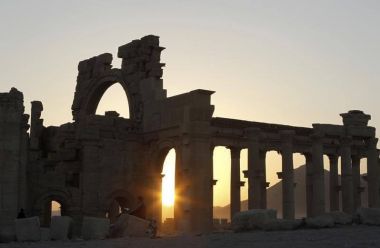ISIS blows up ancient temple in Palmyra

Islamic State militants have destroyed a temple in Syria that dates back to the time of Christ.
ISIS "placed a large quantity of explosives in the temple of Baal Shamin today [Sunday] and then blew it up causing much damage to the temple," Syrian antiquities chief Maamoun Abdulkarim told AFP news agency.
Before the arrival of Christianity in the second century, Palmyra worshipped the Babylonian god Bel, Yarhibol (the sun) and Aglibol (the moon) in the temple.
Baal Shamin was built in 17AD and it was expanded under the reign of Roman emperor Hadrian in 130AD. Known as the Pearl of the Desert, Palmyra, which means City of Palms, is a well-preserved oasis 130 miles north-east of Damascus.
The Unesco site is considered to be one of the most important cultural centres of the ancient world.
It was "extremely important" and had been "almost totally intact," said BBC World Service arts correspondent, Vincent Dowd. Unesco chief Irina Bokova said the destruction of the temple constitutes a war crime.
The demolition is the latest in a series of attacks on historical sites.
ISIS ransacked the central library in the Iraqi city of Mosul in January. In February footage was released showing ISIS fighters smashing artefacts in the museum in Mosul. Finally in March, ISIS used sledgehammers, power tools and explosives to destroy the ancient Assyrian city of Nimrud.
Last week ISIS beheaded the archaeologist and historian, Khaled al-Asaad, who was in charge of Palmyra's extensive cultural artefacts.
The Islamic extremist group has said it considers statues and shrines idolatrous.











